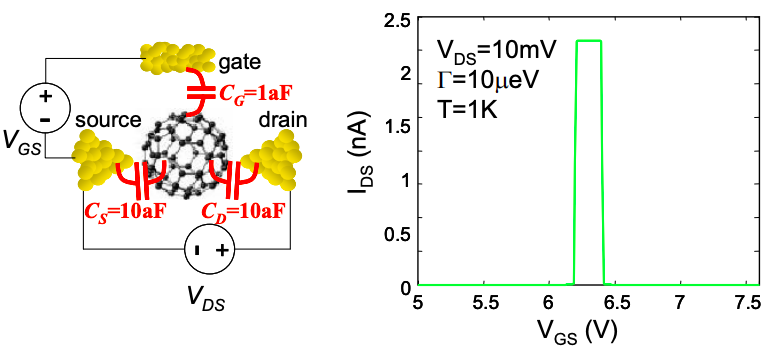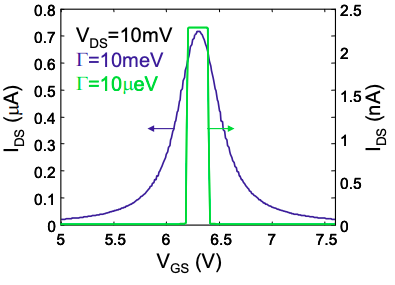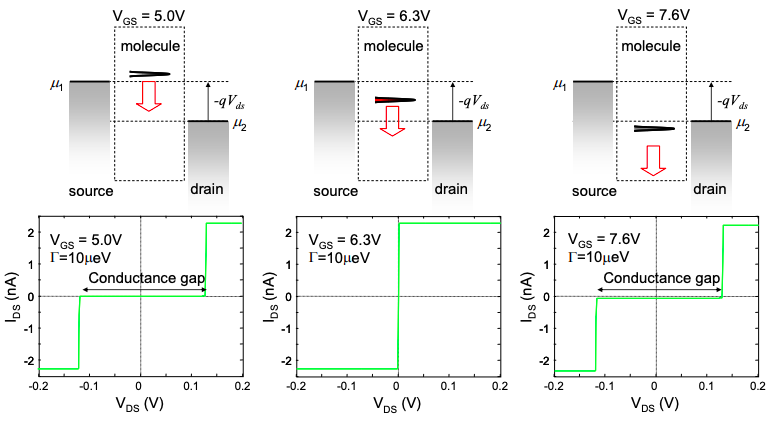5.2: FET switching
- Page ID
- 51319
In digital circuits, an ideal FET has two states, ON and OFF, selected by the potential applied to the gate. In the OFF state, the channel is closed to the flow of electrons even if a bias is applied between the source and drain electrodes. To close the channel, the gate must prevent the injection of electrons from the source. For example, consider the molecular FET in Figure 5.2.1. Here, we follow FET convention and measure all potentials relative to a grounded source contact. For a gate bias of \(V_{GS}< \sim 6.2V\) little current flows through the molecule. But for \(\sim 6.2V < V_{GS}< \sim 6.4V\) the FET is ON and the channel is conductive.

As shown in Figure 5.2.2, the transitions are much more gradual if the molecular energy level is broader. Similarly, increasing the temperature can also blur the switching characteristics.

The origin of FET switching is explained in Figure 5.2.3. The gate potential acts to shift energy levels in the molecule relative to the contact chemical potentials. When an energy level is pushed between \(\mu_{1}\) and \(\mu_{2}\) electrons can be injected from the source. Correspondingly, the current is observed to increase. Further increases in gate potential push the energy level out of resonance and the current decreases again at ~6.4V.



